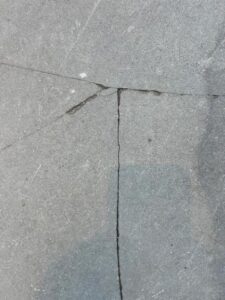Subsidence is a silent yet deadly concern that increasingly affects many properties including properties in Adelaide. This sneaky threat can weaken the foundations of a building, which leads to costly and complex repair work if overlooked.
By identifying the early signs and understanding their causes, expert underpinning contractors can anticipate and prevent the potential effects of subsidence.
For this post, we’ll talk more about subsidence, why it’s a concern, and its top 6 causes.
What is Subsidence?
Subsidence is the gradual sinking or downward settling of the ground’s surface, typically due to underground material movement. It can occur naturally, through processes like soil compaction or human activities, such as mining or excessive groundwater extraction.
Subsidence may lead to significant damage to structures and infrastructure and can also contribute to environmental challenges, like increased flooding risk in low-lying areas. It’s a concern for property owners and urban planners, who must address its potential impact on development and maintenance strategies.
Why is Subsidence a Concern?
Subsidence is a concern because it can lead to serious structural damage, particularly evident in a sinking house. This ground movement can cause cracks in foundations, walls, and roads, resulting in costly repairs.
Furthermore, subsidence affects infrastructure integrity, leading to disruptions in utilities like water and gas lines. It also increases the risk of flooding, especially in low-lying areas, as the changed ground levels alter natural water drainage patterns.
The issue necessitates careful land use planning and regular monitoring to mitigate its impact on built environments and natural landscapes.
What are the Top 6 Causes of Subsidence?
The following are the top 6 causes of subsidence:
Poor Soil Compaction
Poor soil compaction occurs when soil is not adequately compressed during construction. This leads to uneven settlement over time, as the less compacted areas of the soil compress under the weight of buildings or other structures.
It’s particularly problematic in areas with variable soil composition, as differential settlement can cause significant structural damage.

Underground Excavations
Underground excavations, such as mining or tunnelling, can cause subsidence by removing support from the earth’s surface. The voids created by these activities can lead to the collapse of overlying soil layers, especially if the excavations are extensive or close to the surface.
Water Leaks
Water leaks from broken pipes or poor drainage can lead to subsidence by washing away or softening the soil beneath structures. Over time, this can create voids or lead to soil instability, sinking the ground.
Tree Roots
Tree roots can contribute to subsidence by extracting moisture from the soil, causing it to shrink and lose volume. This is particularly evident in clay soils, which are highly susceptible to changes in moisture levels.
Soil Shrinkage
Soil shrinkage typically occurs in clay soils, which shrink and expand in response to changes in moisture content. During prolonged dry periods, the soil contracts, creating gaps and leading to subsidence.
Soil Erosion
Soil erosion, often caused by water or wind, gradually wears away the topsoil and underlying layers, weakening the ground’s support capacity. This is particularly concerning near coastlines or riverbanks.
Are Certain Areas More Prone to Subsidence?
Yes, certain areas are more prone to subsidence. The main cause for this would be soil variations and local environmental factors. For example, places that have clay-rich soils are especially susceptible to subsidence.
